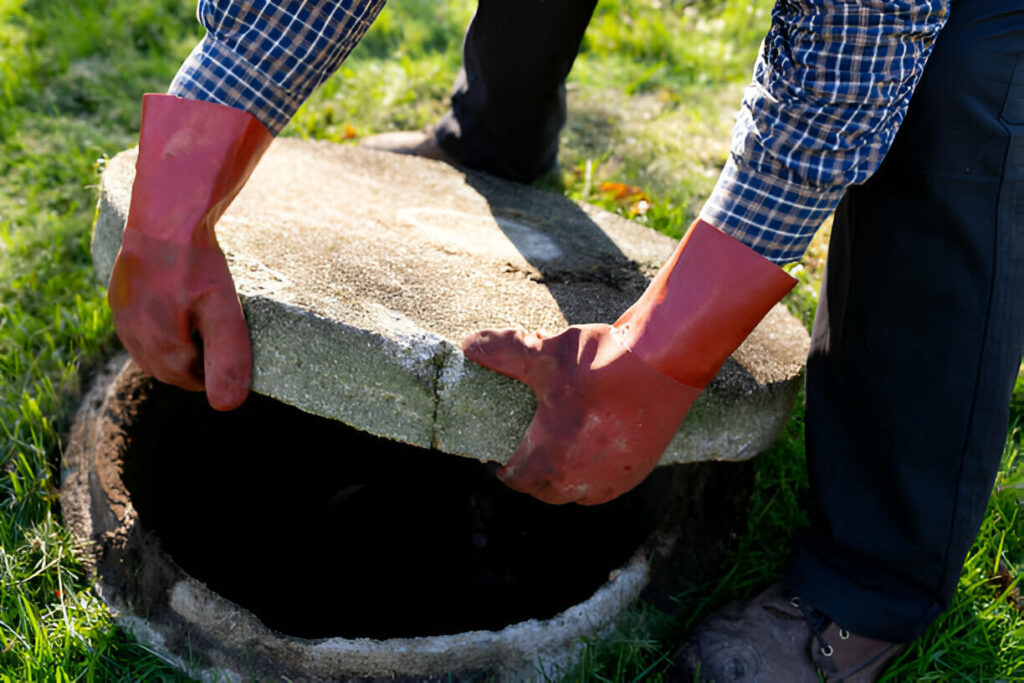Blocked outside drains can be a major hassle, leading to waterlogging, unpleasant odors, and even damage to your property. While they may seem daunting, with the right knowledge and tools, you can tackle these issues effectively. This guide will walk you through everything you need to know about unblocking an outside drain.
Understanding the Problem
Causes of Outside Drain Blockages
Outside drains can become blocked for various reasons:
- Leaves and Debris: Fallen leaves, twigs, and other garden debris can accumulate and block the drain.
- Mud and Silt: Over time, mud and silt can build up, reducing water flow.
- Foreign Objects: Items like plastic bags or toys can accidentally get into the drain and cause blockages.
- Tree Roots: Roots can infiltrate the drain pipes, causing significant blockages and damage.
Signs of a Blocked Outside Drain
Recognizing the signs of a blocked drain early can prevent more serious problems. Look out for:
- Slow Draining Water: Water pooling around the drain or slow drainage after rain.
- Unpleasant Odors: Foul smells emanating from the drain area.
- Overflowing: Water backing up and overflowing from the drain.
Initial Steps to Take
Safety First
Before attempting to unblock your outside drain, ensure you take appropriate safety measures:
- Wear Protective Gear: Gloves, goggles, and waterproof clothing to protect yourself from dirty water and debris.
- Use Tools Properly: Familiarize yourself with the tools you will be using to avoid accidents.
Assess the Situation
Remove the drain cover and inspect the blockage. Determine if the blockage is near the surface or deeper within the pipe.
DIY Methods for Unblocking an Outside Drain
Using a Drain Rod
A drain rod is a flexible rod that can be inserted into the drain to push through or break up the blockage.
- Insert the Rod: Push the rod into the drain until you reach the blockage.
- Twist and Push: Rotate the rod to break up the blockage and push it through.
- Flush with Water: Once the blockage is cleared, flush the drain with water to ensure it is completely free.
Pressure Washer
A pressure washer can be effective for removing blockages caused by mud and silt.
- Set Up the Washer: Connect the pressure washer to a water source and select the appropriate nozzle.
- Insert the Nozzle: Carefully insert the nozzle into the drain.
- Activate the Washer: Turn on the pressure washer and move the nozzle back and forth to dislodge the blockage.
Natural Solutions
For minor blockages, natural solutions like baking soda and vinegar can be effective.
- Baking Soda and Vinegar: Pour a cup of baking soda followed by a cup of vinegar into the drain. Wait for 30 minutes, then flush with boiling water.
Advanced Techniques
Drain Snake
A drain snake, also known as an auger, can reach deeper blockages.
- Insert the Snake: Feed the snake into the drain until you feel resistance.
- Rotate and Push: Turn the handle to break up the blockage and push it through the pipe.
- Remove the Snake: Carefully retract the snake, pulling out any debris.
Wet and Dry Vacuum
A wet and dry vacuum can suck out blockages from the drain.
- Seal the Drain: Create a seal around the drain with a wet cloth or duct tape.
- Set the Vacuum: Switch the vacuum to the wet setting and place the hose over the drain.
- Activate the Vacuum: Turn on the vacuum to suck out the blockage.
When to Call a Professional
Persistent Blockages
If DIY methods fail to clear the blockage, it’s time to call a professional plumber. Persistent blockages may indicate a more serious issue that requires expert attention.
Severe Damage
If you notice any signs of severe damage, such as cracked pipes or extensive root intrusion, professional help is essential. Professionals have the tools and expertise to handle complex problems.
Preventive Measures
Regular Maintenance
Regularly clean your outside drains to prevent blockages. Clear leaves, debris, and mud from the area around the drain.
Install a Drain Cover
A drain cover can help prevent leaves, twigs, and other debris from entering the drain.
Monitor Tree Roots
Keep an eye on trees near your drains. Consider consulting an arborist if you suspect that roots may be causing issues.
FAQs
How often should I clean my outside drain?
It’s advisable to clean your outside drain at least twice a year, particularly before and after the rainy season.
Can I use bleach to clear an outside drain?
Bleach can be used to disinfect drains but is not very effective for removing blockages. Stick to physical methods like rods and pressure washers for unblocking.
What should I do if I notice tree roots in my drain?
If you see tree roots, it’s best to call a professional. Roots can cause significant damage, and specialized equipment is often required to remove them.
Are chemical drain cleaners safe for outside drains?
Chemical cleaners can be harsh on your pipes and the environment. Natural methods or professional help are usually safer and more effective.
How can I prevent leaves from blocking my drain?
Installing a drain cover and regularly clearing debris from around the drain area can help prevent leaves and other materials from causing blockages.
Maintaining Clear Drains
Seasonal Checks
Conducting checks during different seasons can help prevent blockages:
- Spring: Clear away any winter debris like fallen leaves and twigs.
- Summer: Monitor for mud and silt buildup after heavy rains.
- Autumn: Ensure leaves are regularly cleared to prevent blockages.
- Winter: Check for ice or snow that might block the drain.
Regular Inspections
Performing regular inspections can help catch potential blockages before they become serious issues.
- Visual Inspection: Regularly check the area around the drain for debris buildup.
- Functional Tests: Pour water into the drain to check for slow drainage or backups.
Using Enzyme Cleaners
Enzyme-based cleaners can help maintain your drains without harming the environment or your pipes.
- Monthly Use: Use an enzyme cleaner once a month to break down organic material in the drain.
- Flush with Water: After using the enzyme cleaner, flush the drain with warm water to ensure it’s clear.
Conclusion!!
Unblocking an Outside Drain are inconvenient, but with the right approach, they can be managed effectively. By understanding the causes, using appropriate DIY methods, and knowing when to call a professional, you can keep your drains clear and functional. Regular maintenance and preventive measures are key to avoiding future blockages.







